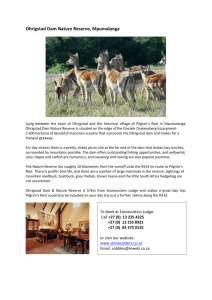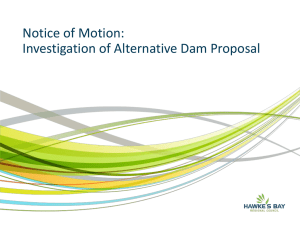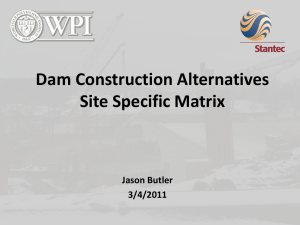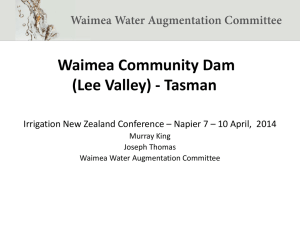Geotechnical Assessment of Alameda Dam
advertisement
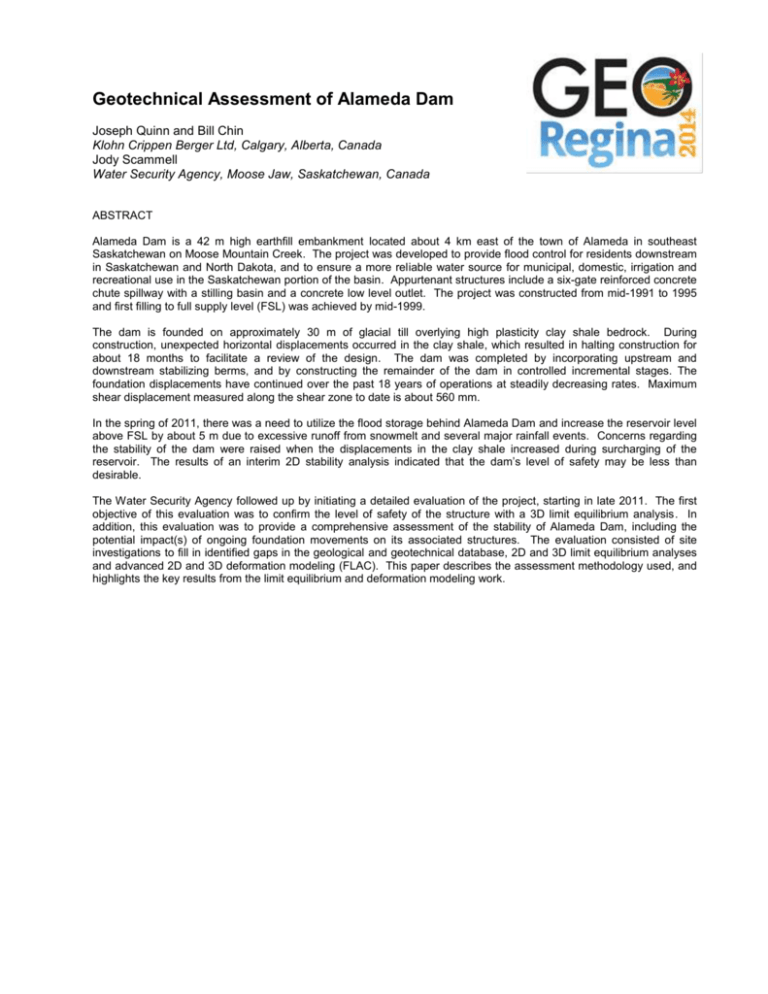
Geotechnical Assessment of Alameda Dam Joseph Quinn and Bill Chin Klohn Crippen Berger Ltd, Calgary, Alberta, Canada Jody Scammell Water Security Agency, Moose Jaw, Saskatchewan, Canada ABSTRACT Alameda Dam is a 42 m high earthfill embankment located about 4 km east of the town of Alameda in southeast Saskatchewan on Moose Mountain Creek. The project was developed to provide flood control for residents downstream in Saskatchewan and North Dakota, and to ensure a more reliable water source for municipal, domestic, irrigation and recreational use in the Saskatchewan portion of the basin. Appurtenant structures include a six-gate reinforced concrete chute spillway with a stilling basin and a concrete low level outlet. The project was constructed from mid-1991 to 1995 and first filling to full supply level (FSL) was achieved by mid-1999. The dam is founded on approximately 30 m of glacial till overlying high plasticity clay shale bedrock. During construction, unexpected horizontal displacements occurred in the clay shale, which resulted in halting construction for about 18 months to facilitate a review of the design. The dam was completed by incorporating upstream and downstream stabilizing berms, and by constructing the remainder of the dam in controlled incremental stages. The foundation displacements have continued over the past 18 years of operations at steadily decreasing rates. Maximum shear displacement measured along the shear zone to date is about 560 mm. In the spring of 2011, there was a need to utilize the flood storage behind Alameda Dam and increase the reservoir level above FSL by about 5 m due to excessive runoff from snowmelt and several major rainfall events. Concerns regarding the stability of the dam were raised when the displacements in the clay shale increased during surcharging of the reservoir. The results of an interim 2D stability analysis indicated that the dam’s level of safety may be less than desirable. The Water Security Agency followed up by initiating a detailed evaluation of the project, starting in late 2011. The first objective of this evaluation was to confirm the level of safety of the structure with a 3D limit equilibrium analysis. In addition, this evaluation was to provide a comprehensive assessment of the stability of Alameda Dam, including the potential impact(s) of ongoing foundation movements on its associated structures. The evaluation consisted of site investigations to fill in identified gaps in the geological and geotechnical database, 2D and 3D limit equilibrium analyses and advanced 2D and 3D deformation modeling (FLAC). This paper describes the assessment methodology used, and highlights the key results from the limit equilibrium and deformation modeling work.




